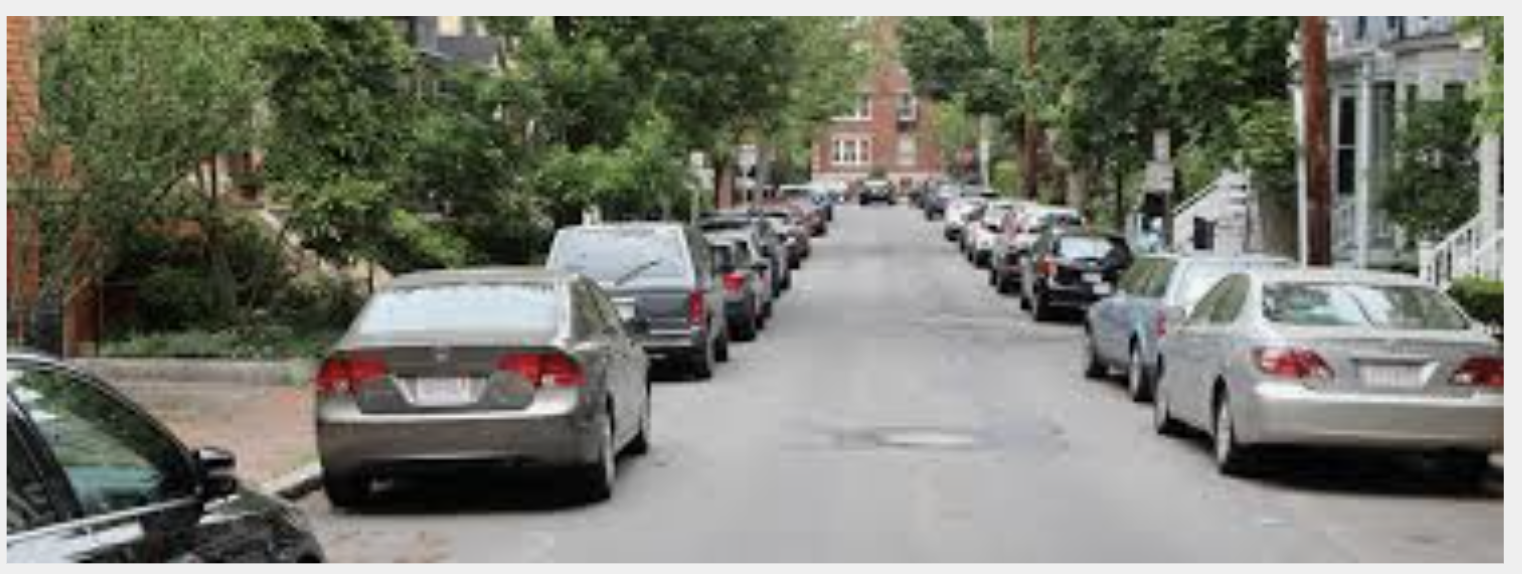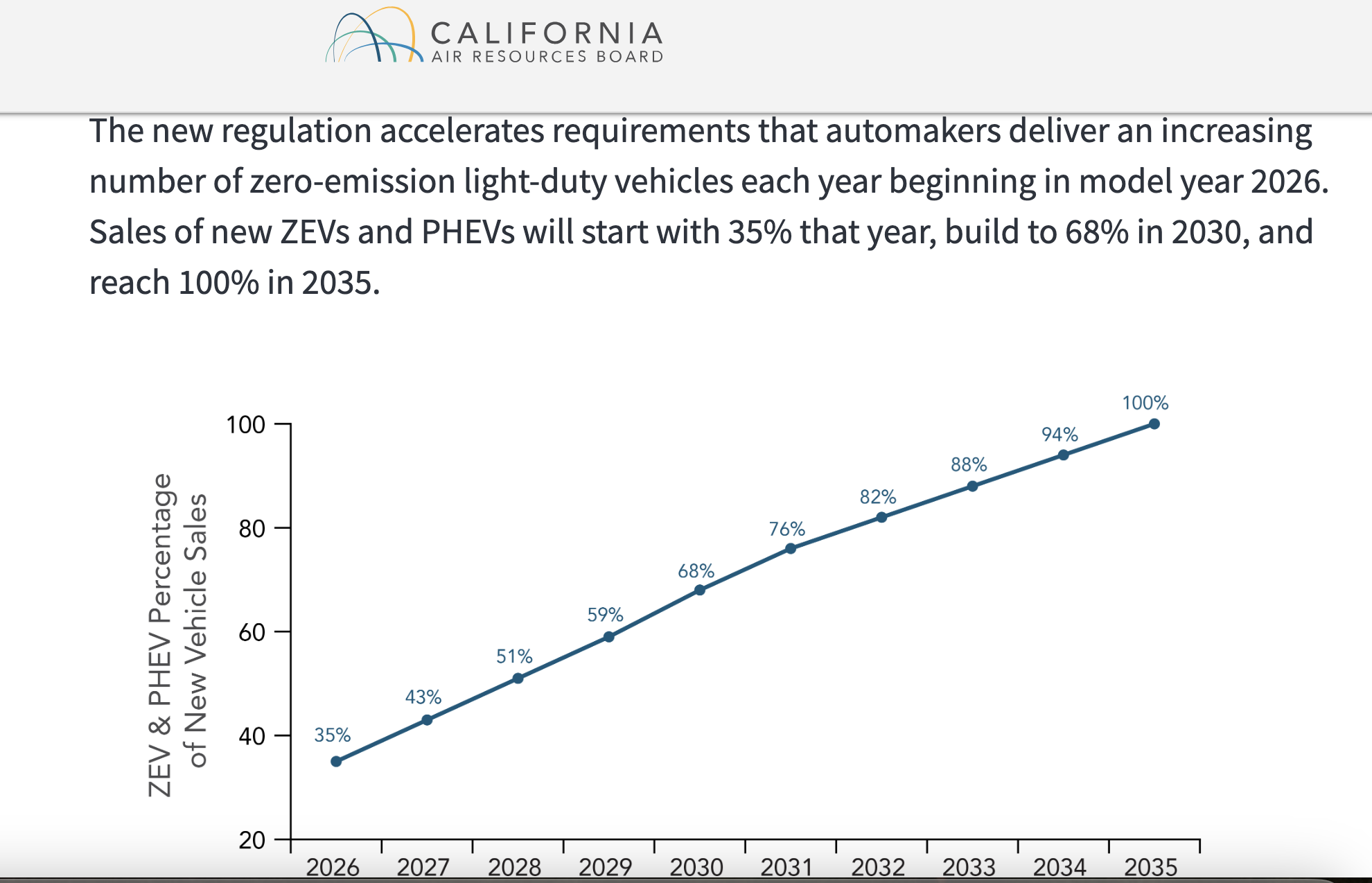"Could"? I'd say, sure to
/It'll serve them right, but why should the rest of us suffer? Residential street parking Cambridge, MA
The UK Is Struggling With EV Mandates. It Could Happen Here, Too.
Since the beginning of the year, the UK has been under a Zero-Emission Vehicle (ZEV) mandate that vehicle manufacturers sell at least 22% all-electric vehicles or face penalties of £15,000 ($19,659.67 as of this writing) for every gas, hybrid, or diesel car over that threshold. The trouble is that less than 22% of British car buyers are going the EV route.
“In the seven months to the end of July, according to the Society for Motor Manufacturers and Traders (SMMT), just 16.8 per cent of cars sold were battery electric vehicles (BEVs),” writes Ross Clark at The Spectator. “This is marginally above the level of 16.1 per cent in the same month of 2023, but it is nowhere near 22 per cent – and that is in spite of manufacturers bending over backwards with generous discounts on the vehicles.”
Much of the problem has to do with pricing. EVs are roughly 50% more expensive in the UK than gas or diesel-powered and hybrid cars. But there’s also an issue of practicality;
“EVs aren’t feasible for British households that can’t park their cars off the street, which is a third of houses in the UK.”
Clark writes:
Now the crunch has come, as it was always likely to do in the autumn: car-makers are getting to the point at which they can’t afford to sell many more petrol, diesel or hybrid models this year without risking running into those punitive £15,000 fines. Hence the efforts to push sales into next year. But that will only buy a temporary stay of execution, because next year manufacturers will have to ensure that 28 per cent of vehicles they sell are BEVs – and the proportion rises to 80 per cent by 2030 (or quite possibly 100 per cent if Labour returns to an all-out ban on petrol and diesel cars by 2030, and adds hybrids to the banned list too). If you have pre-sold much of next year’s petrol and diesel quote in advance, life is going to be even more difficult next year.
Here in the US, federal mandates start biting in model year 2027, and California and states like NY and Massachusetts that are in lockstep with it have already started, and will have completely destroyed the auto industry in their states by 2035. That includes Connecticut.
Related:
The Trials and Tribulations of Traveling 500 Miles in an EV in One Day
Rick Moran, PJ Media:
… Thanks to Julie Myhre-Nunes of Nerdwallet, I now understand why so many people are opposed to buying [EVs]. She drove a Chevy Volt from San Jose to Las Vegas, a 500-mile trip. Google Maps says the trip should take about 8 hours. Ms. Myhre-Nunes's trip took 11.5 hours. (More about that below.)
… First, when the manufacturer or the Department of Energy tells you that the EV has "X" number of miles before it needs recharging, faggettaboutit. That number bears as much resemblance to reality as The Chicago White Sox bear to resembling a professional baseball team.
The reason the range given is a ludicrous number is that very few drivers are driving down a straight and level road without radios or heaters or anything that makes driving less of a chore. Divide the range given by the manufacturer in half and go from there.
This brings us to the problem of where to find a charging station. I've written extensively about this problem and the massive undertaking of building enough of these charging stations — and keeping them in working order — to make EVs more than a status symbol for greens.
I charged the vehicle four times on my trip, using three of the four largest public charging companies: Electrify America, ChargePoint and EVgo. Because all three charging companies function differently, this meant that each time I was figuring out how payments and plugging in worked. It felt like I was 16 again and learning how to fuel up my car for the first time.
Depending on your area, you might have a plethora of charging options or not many at all, and it’s not always predictable. Consider two California cities of comparable size: Fresno with a population of 542,107 and Sacramento with a population of 524,943. When it comes to charging stations with Level 2 and direct-current (DC) fast chargers (the two fastest charging options), Sacramento has more than double the number of chargers in Fresno — 359 and 174, respectively, according to the U.S. Department of Energy. And there’s even more of a divide in different areas across the country.
The lack of charging stations has led to a brand new psychosis; charging anxiety. This is a real thing even if one does as Ms. Myhre-Nunes did; she sketched out her trip with EV charging locations in mind.
She still experienced charging anxiety.
I experienced this twice on my trip — when I reached Mojave, California, with a minimum of 20 miles left, and then pulling into Las Vegas, with a minimum of 32 miles left. Both times I was genuinely concerned that I wouldn’t make it to my next stop. I turned off the air conditioning, stopped listening to my audiobook, unplugged my cell phone and tried to remain positive.
I started to plan out my options for what to do if the car died. I looked up charging stations near me using my phone, but had no luck. Worst case, I was ready to use my AAA membership, although I don’t know what they could do other than tow the vehicle to a charger. Of course, this was first timer’s nerves, but in survey after survey, anxiety over charging and range is among the biggest blockers to widespread EV adoption, with one noting that some 40% of current EV owners still report having a little.
When traveling, you also absolutely must have a smartphone in working order. The charging stations (when they work) force customers to pay using their app. Getting the app to work is sometimes a challenge. Since there's rarely an attendant on duty, you're SOL if your phone is dead.


